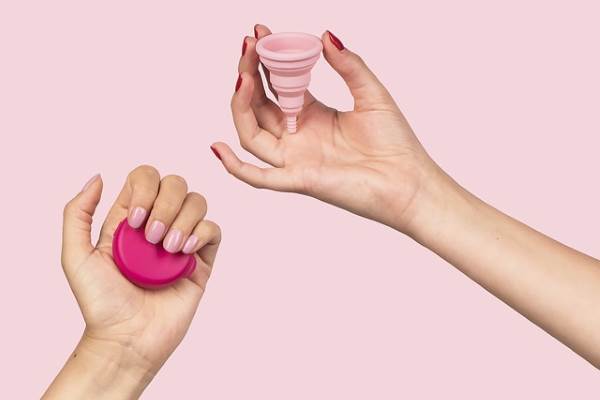With the increasing popularity of menstrual cups, it can be difficult to separate the facts from the fiction, particularly with so many misunderstandings circulating on the menstrual scene. In this article, we’re going to dispel some of the most prevalent (and sometimes harmful) myths we’ve found to assist you in making an informed decision.
In that way, we can get rid of all of your worries, and you can have a carefree period with your menstrual cup.
The Size Of Your Menstrual Cup Should Depend On Your Flow
It is not necessary, however, choosing the right size of your cup can help you not to worry leaks. For example, the Daisy Cup has two sizes the Daisy Cup small and the Daisy Cup regular they have the same quality, but the small size is recommended for teenagers and for a woman who has a low sitting cervix because if you will use the regular size or the larger sizes there is a tendency that your cup will leak.
So you must choose the right size for you not only for your flow but also for other considerations such as your cervix, day to day activities and the sensitivity of your bladder and more.
All Menstrual Cups Can Last Up To 12 Hours
There is some confusion, understandably, over how long a menstrual cup can be worn. There are quite a few menstrual cups on the market claiming that for 12 endless hours they can be worn. However, it depends on the menstrual cup brand that you are using. Some brands can only last up to 8 hours. It would be helpful if you will read their guidelines available on their marketing website before buying to avoid complications.
You Can Never Acquire TSS If You Will Use A Menstrual Cup
There seems to have been some internet reviews over time that unknowingly supported this myth. TSS is a rare and complex disease that can impact males and females alike. It was connected with individuals who had surgery, infections of soft tissue and bone, and bites of insects. It was also related to those who menstruate, those who use intrauterine contraceptive devices, intra-vaginal protective devices, tampons, and menstrual cups to a lower extent recorded.
Menstrual Cups Are 100% Organic
It is not possible to properly describe silicone menstrual cups as’ organic.’ Organic substances are of the kind generated by living stuff or discovered in them. Organic matter is always based on carbon. According to The Soil Association, the leading organic certification body in the UK: “Organic relates to any organic farming products that do not permit the use of synthetic fertilizers, GM foods, and herbicides.”
Since organic matter consists of carbon, silicone can never be’ natural.’ It is, therefore, impossible to have a menstrual cup of’ organic’ silicone. Be careful about misleading language like this and always look for products that are honest and transparent about what they are made of and where they are made.
Menstrual Cups Are Plastic Free
Unfortunately, that’s not true. The quest to live a plastic-free lifestyle can be a complex one, and it is simple to believe that using a menstrual cup will imply that you will have a plastic-free period. Meanwhile, on the market today, many menstrual cups are made of TPE (thermoplastic elastomer), which is, in fact, a plastic itself. Consideration of any single-use plastics concerned is also essential. Is your cup packaging excessive in its plastic use?
Think plastic bags, plastic-coated packaging, plastic windows, and so on. Fortunately, there are some profoundly eco-minded producers of menstrual cups around –including us, of course. The Mooncup menstrual cup is produced of silicone of medical quality–a high-quality material that includes no dyes, BPA, phthalates, plastics, bleaches, or toxins. Although silicone is a synthetic compound, it is not a composite plastic. It is produced of silicon discovered in silica that occurs naturally. After oxygen, silicon is the second most abundant component on the planet.
Menstrual Cups Are Modernly Invented
You would be forgiven for believing that with the latest boom in media coverage, the menstrual cup is a fresh idea. In fact, an American woman named Leona Chalmers invented the first menstrual cup made of rubber in 1937. As World War II broke out and a shortage of rubber struck, her cup manufacturing ran into trouble.
Unfortunately for Chalmers, her cup was encountered by a government opposition that was unwilling to wash and reuse the cup. Perhaps ahead of its moment, owing to the increase in popularity of disposable products, the concept was partially shelved.
Takeaway
Wherever you choose to purchase your menstrual cup, you should be cautious to verify that it meets high-quality standards. There is a bigger chance that you and your vagina may not be as happy with your purchase as you anticipated unless you buy a reputable brand from an authorized retailer.












